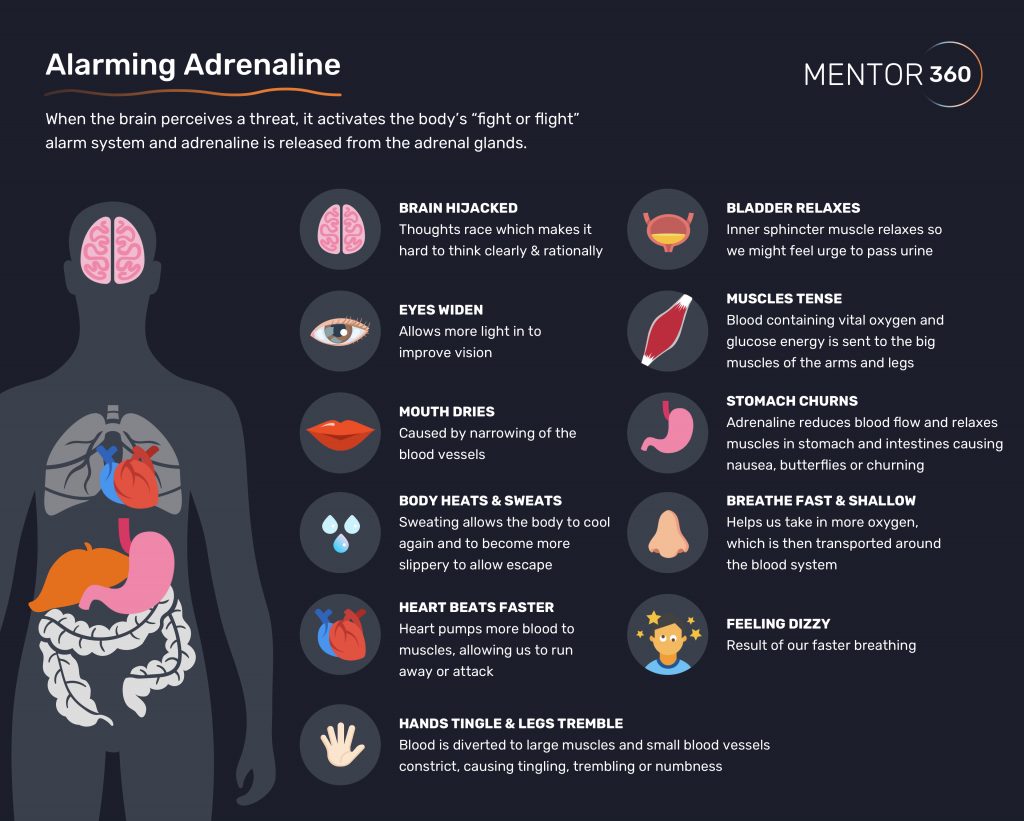Fight or flight is a natural physical response to threat, which has evolved over time in order to keep us safe.
When our brain perceives a threat it activates an alarm system within the body and we prepare to fight or escape (flight). It is important to recognise how our bodies respond during fight or flight in order to understand what is happening and find ways to learn how to manage it.

As well as there being a physical response to threat, there is also a neurological process. The amygdala is the part of our brain that detects and assesses threat. It sends signals to the prefrontal cortex, which makes the decision how to respond. Sometimes the amygdala can be overactive and becomes hypersensitive to threat, detecting threat all around. This overwhelms the prefrontal cortex causing it to reduce in function or go offline. When this happens, we do not receive the message that the threat you have detected isn’t going to harm you. Therefore, we become hyper-aroused and our fight or flight response is triggered through the hypothalamus.
Depending if you are in fight, flight or freeze, this will determine how your body responds to the release of stress hormones, cortisol and adrenaline.